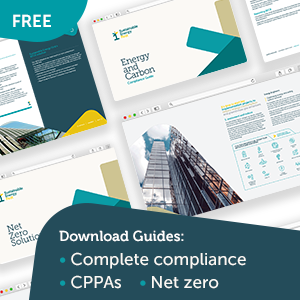For most, the dust has now settled on the second phase of ESOS – the Energy Savings Opportunity Scheme covering thousands of large organisations in the UK. BiU are proud to have helped 100% of clients meet the 2019 December 5th deadline and achieve compliance. The work starts now on ensuring our clients gain real value from the audits and recommendations – by implementing carbon reduction strategies that more than pay for the cost of compliance.
We’ve also been reflecting on the challenges and opportunities presented by ESOS, second time around. Here are our thoughts:
The challenges
As expected, awareness of ESOS was much greater in its second phase.
For many companies, issues still remain around the sourcing and compilation of the required data. Obtaining information on transport fuels was a common issue, as most businesses do not have systems in place to record the volume of fuel used on business activities.
In most cases, this is a stumbling block that requires the engagement and collaboration of staff across different departments – something that is easier said than done. Get in touch with us if you’d like advice on improving your data collection process.
‘O’ for ‘opportunity’
The fundamental aim of ESOS is to help companies identify energy saving opportunities by having a clearer idea of their energy use across the board.
Our ESOS phase 2 survey team identified a range of savings totalling over 22 million kWh, which is in excess of £2,482,000 in potential savings for clients, and with a low payback period of just 3.18 years on average.
In phase 1 we found few customers who implemented the recommendations immediately, as capital budgets needed to be approved and raised. However, 4 years later we find that many have now implemented the ‘low-hanging fruit’ opportunities, such as LED lighting.
This means that for phase 2, many of the quick win projects have been implemented, or processes have changed which negate them. It’s clear that longer term initiatives now need to be considered, such as the installation of Building Energy Management Systems (BEMS), and green energy technologies such as heat pumps and solar. These may fall outside the typically accepted ROI timescale of 2-3 years required by a lot of businesses, there is more funding available than there are ‘shovel ready’ projects – hence capital constraints need not get in the way: all companies will see increasing pressure to help the UK achieve its 2050 net zero target.
Moving on to phase 3
The ESOS phase 3 deadline may be 4 years away, but at BiU we are already helping our clients put systems in place to ensure streamlined and accurate collection of energy data across their sites. Not only will it ensure a pain-free ESOS phase 3, it will also give them valuable insights into energy use and opportunities for savings.
Streamlined Energy and Carbon Reporting – a bigger bite?
Currently more pressing than ESOS is the new Streamlined Energy and Carbon Reporting (SECR) framework, which affects around 11,900 large UK companies. Businesses in scope need to report on their energy use and carbon emissions for financial years starting on or after 1 April 2019.
While ESOS carries no punitive cost, the results of a company’s SECR report will be in the public domain – so it may have more ‘bite’ than ESOS. It’s a yearly requirement, so our focus is on helping organisations work towards an effective and ongoing energy and carbon management programme.







